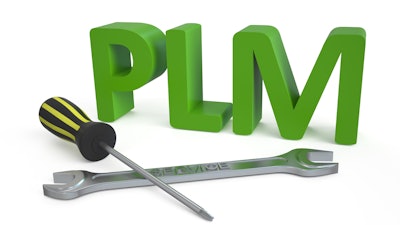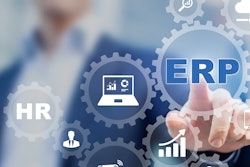
Out-of-the-box (OOTB) PLM software can quickly hinder your digital transformation strategy. The idea of adhering to OOTB is that businesses can configure their PLM tool with minimal effort while adjusting their processes to fit it. But when processes are altered to meet a technology’s capabilities, rather than the technology meeting the business’s needs, the technology often becomes a hinderance to being more agile and competitive.
Taking an OOTB “best-of-breed” approach may seem like a low-cost option, but it’s not sustainable. This outdated mode of thinking results in many customized technology and data silos that fragment your product ecosystem and inhibit the collaboration and agility required to keep pace with today’s accelerating change and exponential growth in data and connectivity—a world where your products are increasingly becoming more complex and connected.
You are unique! However, some companies humbly believe their processes will not differentiate themselves from competitors, and therefore OOTB will work for them. Suppose that were true, that their processes are generic enough to squeeze into an OOTB configuration—this only applies to the processes they currently have. This doesn’t factor time into the equation.
Businesses requirements are constantly changing in this increasingly fast-paced world where data, connectivity, and emerging technologies are exponentially accelerating. Along with this ongoing change will be the impact of any number of unforeseen events—regulations, trade wars, natural disasters, geo-political events, mergers and acquisitions, reorganizations, and potential escalations of the current pandemic. It’s just impossible for OOTB vendors to offer enough configurations to account for a future that is unknown.
Which brings us to the ultimate outcome of customizing on OOTB’s rigid architecture—the inability to quickly and easily upgrade. OOTB locks businesses into the solution and leaves them stuck in time, unable to take advantage of new features and technology, and therefore new value opportunities. This is reflected in the average time that it takes the major PLM vendors to update—which, according to CIMdata, is eight years.
The high cost of upgrading customized OOTB PLM software looks even worse when your budget is already consumed by sustaining it — the cost of technical debt.
This is one of the major reasons companies delay their upgrades, and it only continues to hurt them the longer they put it off. On top of the costs, upgrades become momentous, lengthy efforts involving extensive migration and redeployment that can take a year or more, and by the time these are finished, they are already behind again.
When a company cannot keep their PLM software current, it inhibits their ability to digitally transform and keep pace with the needs of their business. You simply cannot sustainably transform a business based on obsolete technology.
To solve this dilemma, what is required is a sustainable end-to-end platform with full functioning extensible PLM applications, a continuous digital thread that can expand across your entire product ecosystem, and an embedded low-code platform. By incorporating PLM applications and a low-code platform together, you eliminate the need for multiple integrations across different technology stacks.
You now provide your organization with the ability to configure, customize and build industrial applications for many types of data—some the vendor has never thought of, and because it’s based on common platform services and a dynamic data model, it is upgradable. This results in a continually evolving and expanding product ecosystem where more types of data (i.e., simulations, MBSE, requirements, functions, logicals, software, etc.) are shared across an expanding digital thread.
This enables your people to use more data so they can make better data-driven decisions and evolve into a more collaborative organization that can better serve the needs of their customers.
Moreover, they can digitally transform continuously on a more resilient, agile PLM platform that is upgraded at regular intervals, always capitalizing on the latest features and capabilities. This not only enables greater efficiencies, but also eliminates obsolescence by reducing technical debt.
Every upgrade is an extension of the digital thread, enabling your enterprise to collaborate productively and make better data-driven decisions that will translate to faster speed-to-market, improvements to quality, reduced costs, and greater efficiencies.
Keeping current enables companies and their extended enterprises to continually digitalize their product ecosystems, eliminating obstacles on their journey to realize their digital transformation vision. Because no vendor will accurately predict every opportunity and disruption, organizations must be prepared with the latest capabilities—the faster they can respond to the future with present capabilities, the better.
Staying current on a digital thread is crucial for a company to thrive and survive in an uncertain future.






















